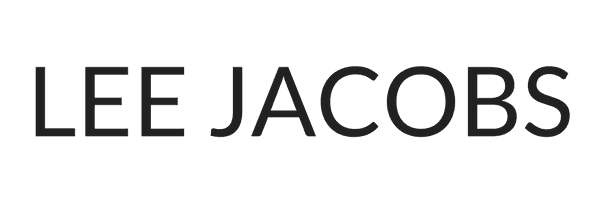Defining your strategy as a venture investor can be tricky given there are so many potential strategies and approaches. I was one of the first people (if not the first) to use what is called an AngelList Syndicate— a way for angel investors to raise an on-demand single deal venture fund.
Later in my role at AngelList, my role was to find people like me—emerging angel investors— who had great deal flow, but not necessarily the means to compete with larger seed funds. My job was to find these people and help them become the best investors they could be.
A lot of investors, experienced and new, have strong points of view on what the right way to invest is. As I have spent time in the industry, I try to get everyone’s feedback, and I am learning as I go.
One thing I know for sure: there is no one-size fits all approach— there is a range of ways to go about investing in startups, and the strategy one takes is highly personal.
For example, some people are gut-driven, people-centered, and deal focused, and as a consequence don’t get into the weeds of evaluating a business. These people should have a strategy that is volume based and create an operating model that they can work within that will make them successful.
Every strategy must be evaluated based on who it is suited to and what specific context it is suited to. Every investor has to find what works for them and I hope this post gives you the insight to support how you want to invest.
1) The Investing Stage that Suits You
I remember a while ago, well-known and pioneering founder of a seed-stage venture fund, said something to me to the effect of:
“I used to think it was all about the market and the team, but what I think now is it’s all about the team. Because the market changes during the early-stage and the business may end up attacking a totally different market. Fundamentally, when I’m asking the entrepreneur questions about what they are building, I do so to evaluate how they think.”
Some investors view the world purely through a people-centric view, and this is important to know as one defines their strategy.
Now, evaluating people of course matters throughout all stages of investing— but if you are more gut-driven and focused on people, you are likely better suited for seed or series A investing. During the early stage of a company:
- There isn’t much customer data to go off.
- Any data you may have can actually be misleading and hard to generalize from.
- The company will likely pivot, and its market will probably change- you can’t control that.
However, while much may change about the business— the people you invest in are the least likely to change (sure, a co-founder may leave).
Now, there are investors out there that have a very different orientation— they meet a company, they do a ton of research, spend weeks analyzing the numbers, make numerous industry calls. If this is you-you are likely suited to be a later stage investor when there is more to actionable information to dig your teeth into.
The important thing is, if you are more suited to later-stage investing, it’s useful to be very self-aware of what lends you are using to evaluate investment opportunities.
For example, if you are a Series A investor evaluating a seed investment opportunity, you don’t want to make the mistake of using your late stage perspective (focus on numbers and management team inexperience, for example) to evaluate an early stage opportunity.
If you put these later-stage lenses on evaluating a seed investment— you might miss out on the opportunity. I have seen many series A funds really struggle with this and as a result, miss out on the next great company.
My approach is very people-centric; I tend to view the world through relationships with people, not data— so, I have oriented my investing strategy in this way. That’s not to say that you can’t be gut-driven, people-centric and data-driven too— all these things matter and can help. It’s about understanding where you sit on the sliding scale and tailoring your investing strategy to fit.
2) Select Your Broader Investing Strategy
For the more people-driven and gut-driven investors, the diligence process is typically faster than those who are driven by data and extensive research. Either you are investing in someone you have known for a long time from your network, or you are investing based on a gut instinct informed by intuition.
Regardless, once a company is raising you are likely to make a decision relatively quickly. With all that that said, a high volume low valuation entry point is likely the best fit. Furthermore, people-driven investors tend also to be generalists. For example, some of my investments range from education companies (Wonderschool) to workflow tools (Pipefy).
Iconic funds such as Foundry and Union Square— spend a lot of time doing deep thinking around market trends to build their thesis-driven approach. This strategy can obviously be hugely successful— see the track records of USV and Foundry— it just isn’t how I have invested to date.
That said, I also have a point of view on where things are going in a given market— I simply tend to approach opportunities with an open mind and let the founders-piece by piece- show me the opportunity they see in a given market.
For example, when I invested in Justin and Nick, founders of Kettle & Fire (one of our portfolio companies), I had to ask Justin what Bone broth was. When I met Justin, it was clear to me that they were extremely talented, and believed in the opportunity in the growing Paleo segment for grass-fed shelf table bone broth.
I decided to follow my rule to invest in people and not ideas; today, Kettle & Fire’s bone broth has spread nationwide and is one of our fastest growing portfolio companies.
3) Adding Ongoing Support and Value to Founders
As I covered in a previous post, if I don’t know something, I’ll go and find and collaborate with people who are experts in areas I am not, and ask them for their input.
I’m not an expert on the bottom’s up SaaS models and customer-acquisition strategy— my investing partner Brian Balfour is. I tend to help our founders with fundraising and general coaching, guiding them to find their own solutions to all sorts of problems and opportunities.
With Pipefy, for example, I attend board meetings, advocate for the founders, and help facilitate conversations among the group in a way that helps founders succeed. What I don’t do is give tactical advice on product branding and positioning, for example. I am self-aware about where I am helpful and where I am not.
In summary, finding the investing strategy that fits is first an exercise in self-awareness— there are no one-size fits all. Answer these questions:
- Are you more people-focus, data-driven, or a combination of both?
- What are do you enjoy doing and what are you naturally good at?
- For the things you aren’t great at, create a strategy where this doesn’t matter.
Then, reverse engineer the investing strategy that fits fit you and how you want to operate.
Lee Jacobs

